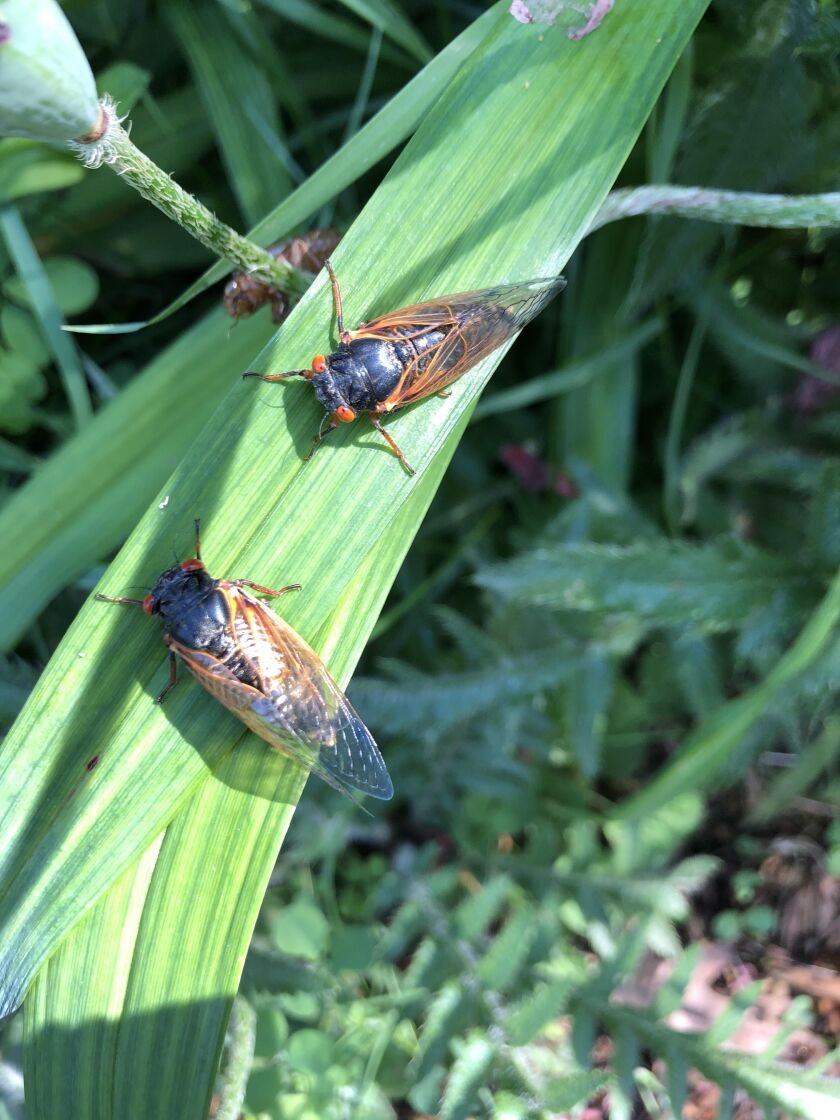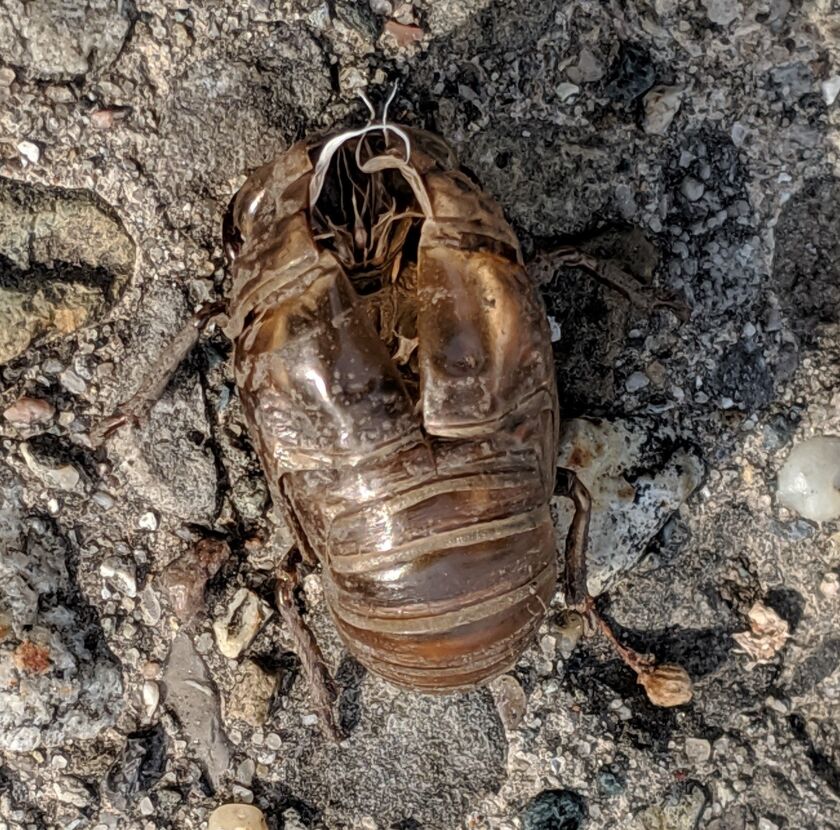Carl Strang takes singing insects seriously.
Naturally he replied seriously to my offhand question if he had ever eaten a periodical cicada.
“I haven’t eaten one,” he replied. “I am philosophically opposed to taking something that has waited 17 years to complete its life and making an unnecessary snack of it.”
Spots of periodical cicadas are emerging this spring around the Chicago area. Somehow, it fits with the strangest year of my life.
A week ago birder Alan Anderson was first to send photos and give me a heads up that some periodical cicadas were emerging. Periodical cicadas emerge every 13 or 17 years, generally. The larger annual cicadas, often called dog-day cicadas, emerge in late June or early July.
“The periodical ones will be done, or nearly so, by then,” Strang guessed.
Last week David Jakubiak tweeted wonderful cicada photos from Brookfield, mostly from their yard.
“We walked around town yesterday and it seems really spotty,” he messaged last week. “Some yards with a lot, some with none.”
On Wednesday, he emailed, “The heat over the last couple days sent things into overdrive! We’re now over 200!”
Strang, a retired Forest Preserve District of DuPage County naturalist who compiles and updates “Singing Insects of the Chicago Region,” emailed last week, “Our experience in 2007 was that they emerged in residential areas (more open, and so warming more quickly) before forests. I have received reports of cicadas observed in several residential areas already, and I heard a single one singing yesterday in Wheaton. I saw signs that there will be a big emergence in some forest preserves in western DuPage, and expect the same in adjacent preserves in Cook.
“My phenological indicators point to a later emergence than in 2007, by eight days to two weeks, thanks to the cold spring. The cicadas, like wildflowers, are governed by soil temperature.”
Strang has a good blog entry on the topic. Click here to read it.
Many remember the last major emergence in 2007 in the Chicago area.
“The main brood due out in Chicago in 2024 is a northern brood, so it will only be in the northern half of the state,” emailed Christopher Dietrich, curator of the insect collection for the Illinois Natural History Survey. “However, coincidentally, there will also be a large brood of 13-year cicadas (Brood XIX) emerging in the southern half of Illinois that same year. Because much of Illinois is now agricultural and periodical cicadas are forest insects, they generally only occur in areas with mature trees.”
Dietrich recommended cicadamania.com/cicadas/where-will-17-13-year-periodical-cicadas-emerge-next/ for a summary of the geographic ranges and emergence years of the various broods of periodical cicadas in the eastern United States.
“The ones emerging in the Chicago area are most likely members of either Brood X (ten) or Brood XIII (thirteen) of 17-year cicadas, or both,” he emailed. “The main emergence of Brood X is not due until next year and Brood XIII (the one you mentioned) is not due until 2024, but some cicadas of both these broods have been documented too emerge early, so that’s what you’re seeing.”
Strang had this assessment of the 2020 emergence, “In most areas it will be smaller, and the area where it occurs will be smaller. There is an area around Wood Dale and Addison where cicadas did not emerge in 2007 but are expected this year. That indicates a shift in the timing of that entire population’s emergence.”
Dietrich gave this statewide perspective, “In Illinois, we have five different broods, more than any other state. None of our broods cover the entire state. Generally, members of the different broods have different distributions in time and space, with little overlap.”
I asked Strang and Dietrich about various impacts on cicadas.
“Clearing of trees will have removed local populations,” Strang answered. “If areas of trees are reduced below a certain size, populations there are expected to die out because there won’t be enough cicadas remaining to keep the population going.”
Dietrich pointed to Chris Simon at the University of Connecticut and her colleagues, who have tracked periodical cicada populations for decades, and “they have definitely documented declines in some of the broods that occur in areas hardest hit by deforestation and urbanization.”
He added, “Also, regarding annual cicadas, there are actually several species in Illinois that prefer native prairie or savanna habitats and, as you might imagine, these have declined quite dramatically as a result of the almost total destruction of our native grasslands.”









